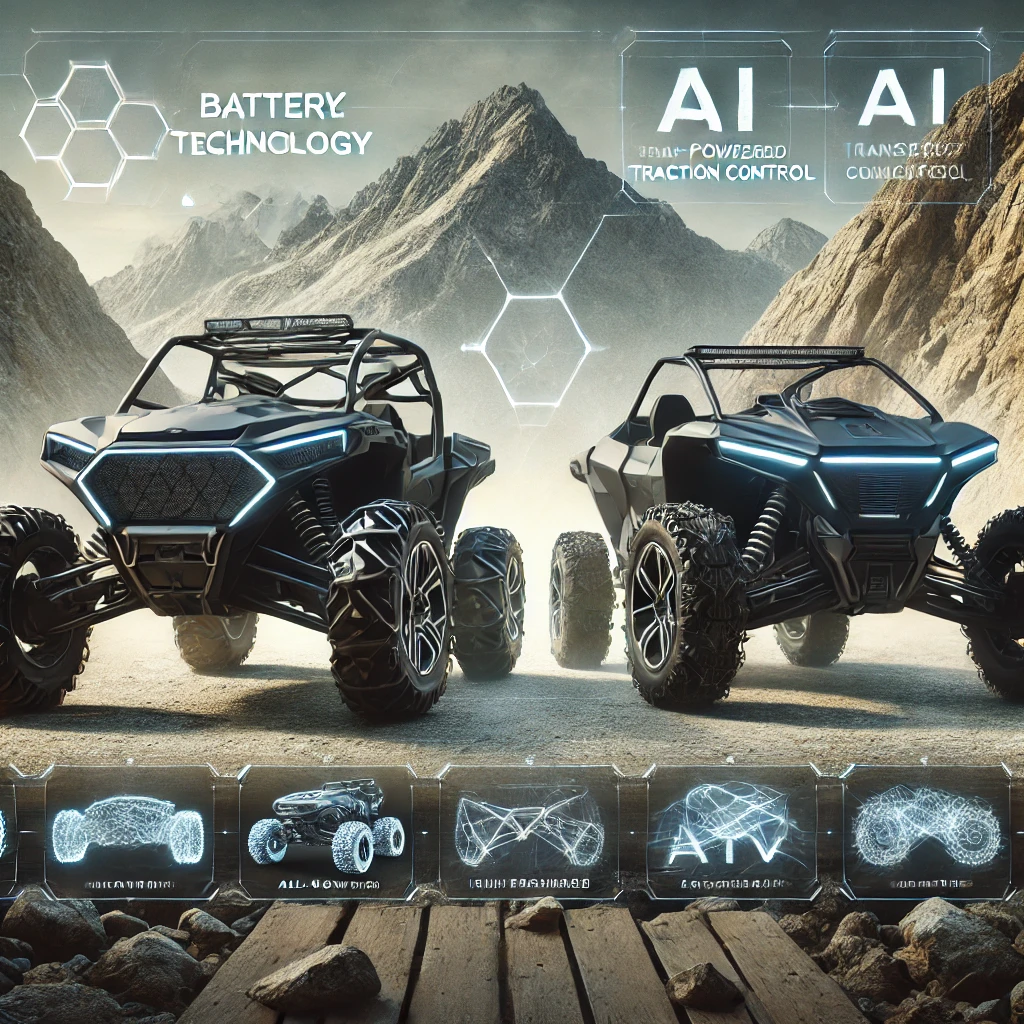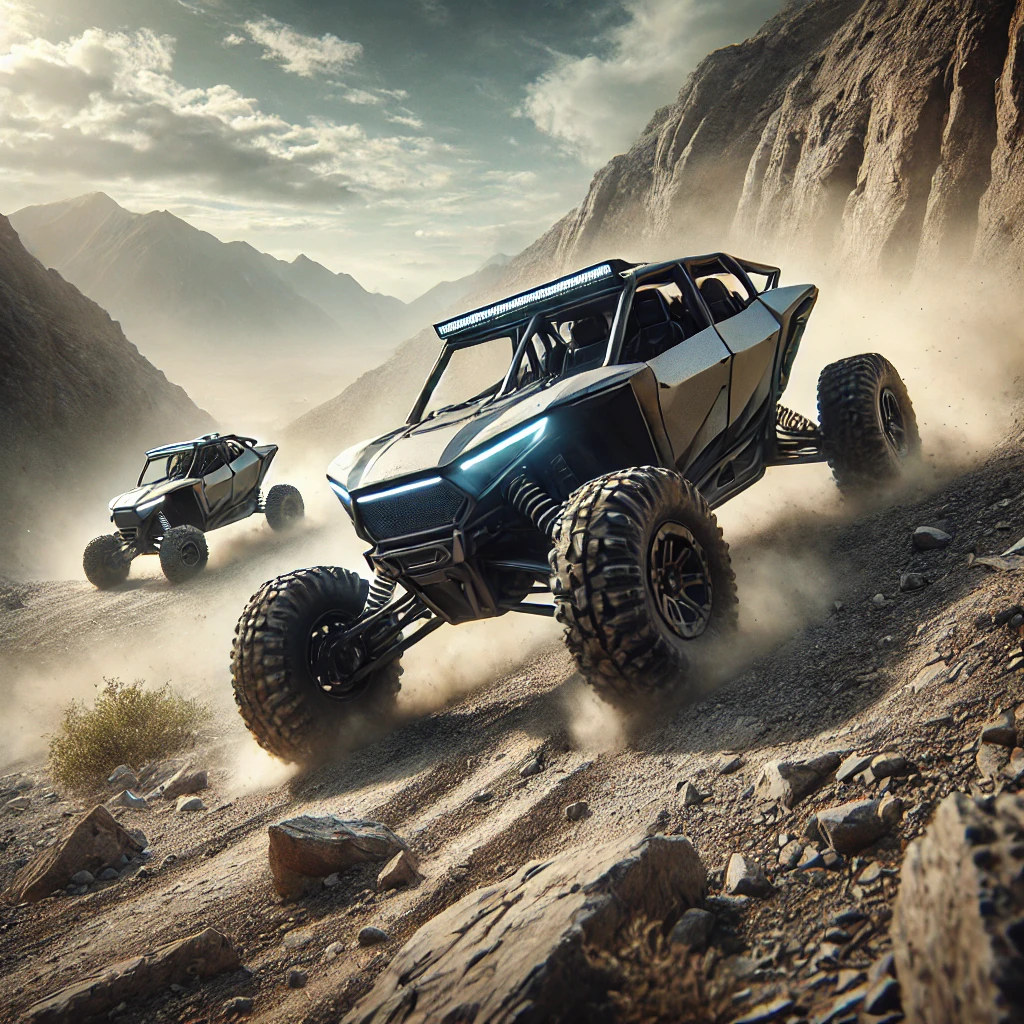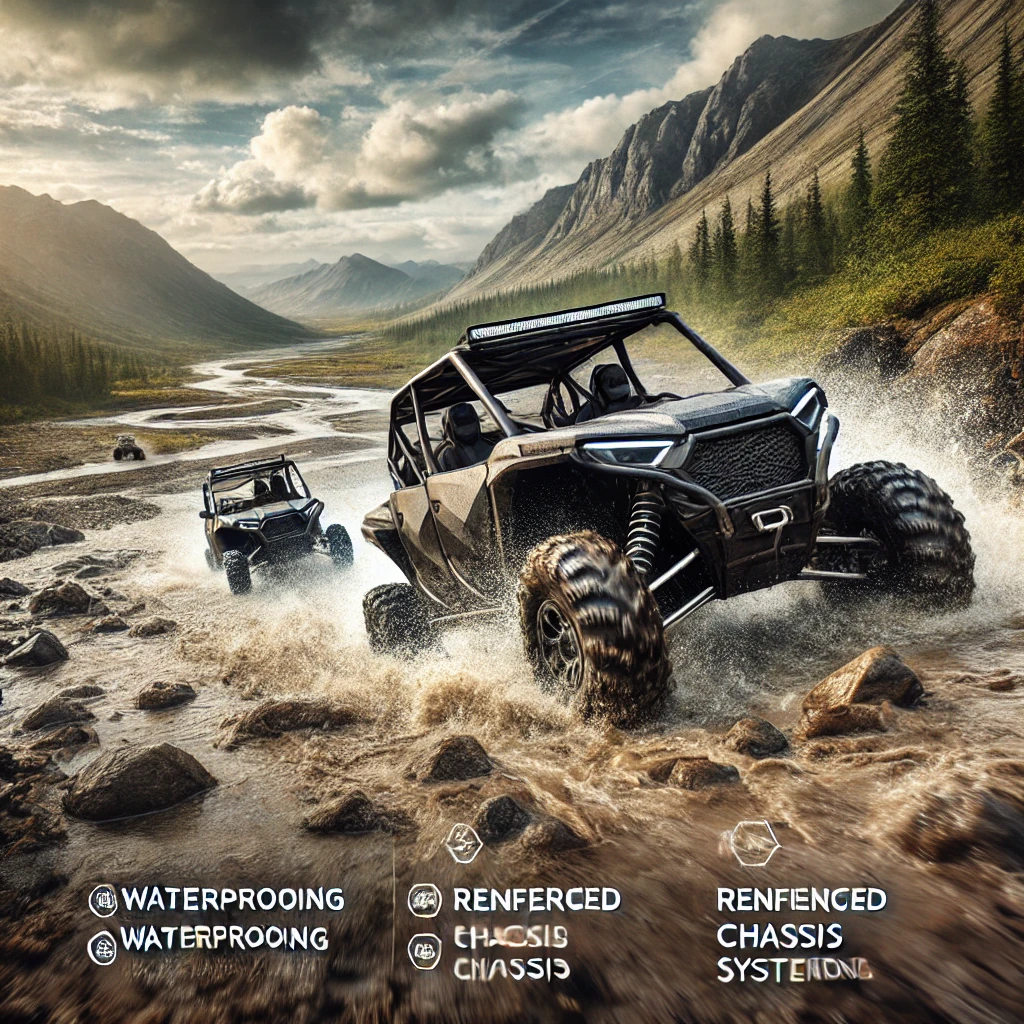
The Best Electric ATV & UTV Models of 2025: Power, Durability, and Technology
The off-road vehicle industry has undergone a massive transformation in 2025, with electric ATVs (All-Terrain Vehicles) and UTVs (Utility Task Vehicles) taking center stage. With advancements in battery technology, motor efficiency, and intelligent driving systems, electric off-road vehicles are no longer just an alternative but a superior choice for riders seeking power, durability, and cutting-edge features. Whether you’re a recreational rider looking for thrilling adventures or a professional seeking a high-performance utility vehicle for work applications, 2025’s electric ATV and UTV lineup offers game-changing innovations.
In this comprehensive guide, we dive into the top electric ATV and UTV models of 2025, analyzing their powertrains, range, durability, smart technology, and off-road capabilities. This guide is designed for enthusiasts, professionals, and anyone looking to make the switch from gas-powered to electric for a cleaner, more efficient off-road experience.
1. The Evolution of Electric ATVs & UTVs

Over the past decade, the off-road industry has witnessed a massive transformation, with electric ATVs (All-Terrain Vehicles) and UTVs (Utility Task Vehicles) emerging as powerful, sustainable alternatives to traditional gas-powered models. Once considered a niche market, electric off-road vehicles in 2025 have become mainstream, boasting high-performance powertrains, intelligent traction control, and next-generation battery technologies. This shift is driven by environmental concerns, rising fuel costs, and advancements in electric power efficiency that now enable electric ATVs and UTVs to outperform their combustion-engine counterparts in nearly every category.
The Shift from Gas to Electric Power
For years, gas-powered ATVs and UTVs dominated the off-road scene, primarily because they offered high power output, long-range capabilities, and quick refueling times. However, with modern advancements in solid-state batteries, regenerative braking, and AI-driven power management, electric models now provide:
- Instantaneous Torque & Superior Acceleration – Unlike gas engines that require RPM buildup, electric motors deliver 100% torque from the start, providing better low-speed control, hill-climbing ability, and towing power.
- Lower Operating Costs & Maintenance – Electric ATVs and UTVs have fewer moving parts, eliminating the need for oil changes, fuel filters, spark plugs, and transmission maintenance. This drastically reduces long-term costs while ensuring higher reliability.
- Eco-Friendly & Zero Emissions – With increasing environmental regulations and bans on gas-powered vehicles, electric off-road models allow users to explore protected areas and nature trails without harming the environment.
- Silent Operation for Better Wildlife Access – Gas-powered off-road vehicles generate loud engine noise, which disturbs wildlife and reduces hunting and outdoor recreation experiences. Electric models, on the other hand, operate almost silently, allowing riders to blend seamlessly into nature.
- Energy-Efficient Driving Modes – With smart power allocation, electric ATVs and UTVs feature customizable driving modes, such as Eco, Sport, and Off-Road Max, which optimize energy consumption based on riding conditions.
Breakthroughs in Battery Technology
The biggest challenge for electric off-road vehicles has always been battery performance and charging time. In 2025, however, battery innovations have significantly improved energy density, charging speed, and durability, making electric ATVs and UTVs more practical than ever before.
- Solid-State Batteries – A major leap forward, solid-state batteries provide higher energy density, meaning riders can now enjoy ranges exceeding 200 miles per charge. These batteries also have longer lifespans and improved thermal stability, reducing the risk of overheating.
- Graphene-Enhanced Battery Cells – With graphene-infused lithium-ion cells, electric ATVs and UTVs can deliver faster power output without overheating, making them ideal for extreme off-road performance.
- Fast-Charging Capabilities – New charging technologies now allow ultra-fast recharging, bringing batteries from 0% to 80% in under 30 minutes. This makes electric ATVs and UTVs far more convenient for extended use in remote areas.
- Solar-Assisted Charging – Some manufacturers are introducing solar panel-equipped models that allow batteries to trickle charge while parked or in use, extending ride time by up to 15% per day.
- Modular Battery Systems – The introduction of swappable battery packs enables riders to replace depleted batteries in minutes, eliminating downtime and providing uninterrupted riding experiences.
With these advancements, electric ATVs and UTVs are no longer limited by range or charging concerns—they now provide long-lasting, high-performance riding experiences that compete directly with (or even surpass) gas-powered models.
Why More Riders Are Switching to Electric
In addition to improved performance and efficiency, many off-road riders are choosing electric ATVs and UTVs because of their user-friendly design, intelligent features, and lower environmental impact. Whether it’s for recreational use, agriculture, industrial work, or adventure sports, electric off-road vehicles in 2025 offer:
- Quieter Rides for Hunting & Outdoor Exploration – Ideal for stealth and undisturbed wildlife viewing.
- Smoother Handling with AI-Driven Stability Controls – Ensures better grip and enhanced traction on rough terrain.
- Lower Long-Term Ownership Costs – Fewer moving parts mean less frequent repairs and replacements.
- Access to Protected Trails & Wildlife Areas – Many national parks are now allowing only electric off-road vehicles to reduce environmental impact.
2. Power and Performance: Torque, Horsepower & Terrain Handling

When it comes to power and performance, electric ATVs and UTVs have made groundbreaking advancements that position them as serious competitors to traditional gas-powered vehicles. The latest models deliver instantaneous torque, higher horsepower ratings, and intelligent traction control systems, making them more capable than ever. Whether it’s conquering steep inclines, towing heavy loads, or navigating difficult terrains, electric models in 2025 offer superior acceleration, stability, and off-road handling.
Instant Torque & Superior Acceleration
One of the most significant advantages of electric off-road vehicles is their instant torque delivery. Unlike gas-powered models that require RPM buildup, electric motors deliver 100% torque from the moment the throttle is engaged, resulting in:
- Faster Acceleration: Electric ATVs and UTVs can reach top speeds more quickly, making them ideal for high-speed trails and competitive racing.
- Stronger Climbing Ability: More torque means electric off-road vehicles can tackle steep inclines with ease, making them the preferred choice for mountainous terrains.
- Better Towing Power: Many 2025 models offer higher torque ratings than gas-powered counterparts, making them more efficient for hauling equipment, farming, and industrial use.
Horsepower & High-Performance Motors
In 2025, manufacturers have introduced high-output electric motors that rival and often surpass gas-powered engines. Today’s electric ATVs and UTVs come equipped with advanced multi-motor drive systems, enabling them to generate greater horsepower while maintaining efficiency.
Power Ratings of 2025’s Best Electric Off-Road Models:
- Polaris Ranger XP Kinetic Ultimate – 110 HP, 140 lb-ft torque, 80-mile range, featuring an advanced AI-assisted power distribution system.
- Can-Am Maverick X3 Electric – 150 HP, 160 lb-ft torque, regenerative braking system, ideal for high-speed desert runs.
- Tesla Off-Road Beast Concept – 250 HP, 200 lb-ft torque, AI-controlled traction system, custom drive modes for optimal power efficiency.
- Yamaha Wolverine RMAX EV – 120 HP, 130 lb-ft torque, battery-swappable system for extended range, best suited for rugged mountain trails.
- Segway Fugleman UT10E – 105 HP, 125 lb-ft torque, integrated fast-charging system, versatile performance across multiple terrains.
Advanced Traction Control & AI-Powered Handling
The biggest challenge for off-road vehicles is maintaining stability and grip on uneven, loose, or slippery terrains. In 2025, electric ATVs and UTVs feature cutting-edge AI-powered traction control systems that automatically analyze terrain conditions and adjust power distribution accordingly.
Key Features of AI-Driven Terrain Adaptation:
- Dynamic Torque Vectoring – Adjusts power delivery between wheels for maximum grip and stability.
- Auto-Locking Differentials – Intelligent sensors detect wheel slippage and lock differentials to prevent loss of traction.
- Adaptive Suspension Control – Real-time suspension adjustments optimize shock absorption based on terrain type.
- Terrain Memory & Learning Systems – Some models now learn from previous rides and pre-adjust settings based on rider behavior and typical route conditions.
- Four-Mode Power Distribution: Riders can choose from:
- Eco Mode – Optimizes power usage for extended range.
- Sport Mode – Maximizes performance for racing and aggressive riding.
- Crawl Mode – Improves control for rock climbing and technical terrains.
- All-Terrain Mode – Auto-adjusts power and suspension for a balanced experience.
Extreme Off-Road Capability: Conquering Any Terrain
Electric ATVs and UTVs in 2025 are designed to handle the most demanding conditions, including deep mud, snow, sand dunes, rocky hills, and river crossings. Thanks to innovations in:
- High-Ground Clearance Chassis: Allowing riders to navigate obstacles without bottoming out.
- All-Terrain Smart Tires: Featuring self-adjusting tire pressure for optimal grip in different terrains.
- Waterproofed Powertrain & Battery Systems: Enabling electric ATVs to cross rivers and operate in wet conditions without damage.
- AI-Optimized Weight Distribution: Enhancing stability and preventing rollovers on extreme inclines.
The Verdict: Electric ATVs & UTVs Outperform Gas Models
With instant torque, superior acceleration, advanced traction control, and AI-assisted handling, electric ATVs and UTVs in 2025 have reached a level where they match or exceed the performance of gas-powered models in nearly all aspects. Whether for work, adventure, or sport, these new machines provide:
✅ Faster speed and response time
✅ Better control over all terrains
✅ Stronger towing and climbing abilities
✅ Lower maintenance and higher efficiency
With more riders making the switch, the future of off-road vehicles is electric! 🚜⚡🔥
3. Durability & Off-Road Capabilities

Electric ATVs and UTVs in 2025 are engineered to withstand the most challenging terrains and extreme conditions, setting new standards in structural integrity, waterproofing, and impact resistance. Innovations in chassis materials, AI-driven suspension systems, and all-terrain adaptability have made modern electric off-road vehicles more rugged, reliable, and long-lasting than ever before.
Reinforced Frames and Chassis Engineering
The backbone of any off-road vehicle is its frame, and in 2025, manufacturers are utilizing next-generation materials to enhance durability while reducing weight. New models feature:
- Carbon Fiber-Reinforced Aluminum Chassis – Lightweight yet exceptionally strong, reducing overall weight for better energy efficiency without sacrificing impact resistance.
- High-Strength Steel Frames – Found in heavy-duty UTVs, providing superior structural rigidity for carrying loads and towing equipment.
- Military-Grade Polymer Body Panels – These panels are impact-resistant, corrosion-proof, and UV-resistant, ensuring prolonged durability in extreme environments.
- Kevlar-Infused Skid Plates – Designed to protect undercarriage components from sharp rocks, tree roots, and uneven surfaces.
AI-Enhanced Suspension & Shock Absorption
Suspension plays a critical role in off-road performance, and in 2025, intelligent AI-controlled suspension systems dynamically adjust to terrain changes.
Key Suspension Features:
- Electronically Controlled Adaptive Damping – Sensors monitor ride conditions in real time and adjust shock absorber stiffness accordingly.
- Self-Leveling Suspension – Helps maintain stability during high-speed turns and when carrying heavy loads.
- Hydraulic Ride Height Adjustments – Allows riders to raise or lower their vehicle for optimal clearance on rough terrain.
- Independent Traction Control for Each Wheel – Ensures smooth rides over bumpy surfaces, reducing rider fatigue on long adventures.
Waterproofing & Extreme Weather Resistance
One of the most impressive advancements in 2025’s electric ATVs and UTVs is their ability to withstand extreme weather conditions. Whether crossing deep water, navigating snowy landscapes, or enduring scorching desert heat, new models come equipped with:
- IP68-Rated Waterproof Batteries & Motors – Fully sealed and submerged up to 1.5 meters without damage.
- Weatherproof Electronics & Enclosures – Prevents mud, dust, and moisture from interfering with onboard sensors and displays.
- Anti-Freeze Liquid Cooling Systems – Keeps motors and batteries at optimal temperatures in freezing conditions.
- Heat-Resistant Coatings – Protects frames and battery enclosures from high desert temperatures and UV radiation.
Tire Innovations & Terrain Adaptability
Off-road tires are crucial for ensuring optimal traction and ride comfort, and in 2025, self-adjusting smart tire technology has revolutionized all-terrain capability.
Smart Tire Features:
- Self-Inflating & Deflating Systems – Adjusts tire pressure based on terrain type, improving grip in mud, sand, and snow.
- Kevlar-Reinforced Sidewalls – Resistant to punctures from sharp rocks, increasing longevity.
- AI-Assisted Terrain Sensors – Monitors tire traction in real time and suggests adjustments to maintain stability.
- Hydrophobic Tread Patterns – Designed to repel water, mud, and ice, reducing slippage on wet surfaces.
Best Durable Electric ATVs & UTVs in 2025
If durability is your top priority, the following models are built to withstand the harshest off-road conditions:
- Rivian R1X UTV – Military-grade aluminum body, IP68 water resistance, high-performance adaptive air suspension.
- Tesla CyberQuad 2.0 – Graphene-reinforced frame, self-healing battery tech, regenerative braking.
- Nikola NZT Electric UTV – Bulletproof battery casing, reinforced carbon fiber panels, AI-driven traction optimization.
- Yamaha Grizzly EVX – Waterproofed powertrain, impact-resistant fenders, independent AI traction control.
- Polaris Ranger XP 1000 EV – Heavy-duty payload capability, self-repairing nano-coating for scratch resistance.
The Future of Durability in Electric Off-Road Vehicles
As the demand for electric ATVs and UTVs grows, manufacturers are investing in even more resilient designs. Future advancements may include:
✅ Nano-Coated Self-Healing Body Panels – Vehicles that repair scratches and dents automatically.
✅ Graphene-Infused Chassis for Extreme Strength – Making vehicles nearly indestructible.
✅ Magnetorheological Suspension Systems – Instantly adapting damping response in milliseconds.
✅ Next-Gen Smart Tires with Shape-Shifting Tech – Tires that morph to suit any terrain instantly.
With advanced materials, AI-assisted suspension, terrain-adaptive tires, and extreme weatherproofing, electric ATVs and UTVs are now tougher, smarter, and more capable than ever before. The days of questioning their durability are over—they’re built to conquer anything! 🚜⚡🔥als alike. The future of off-road mobility is here, and it’s electric! 🚜⚡🔥
Conclusion
The electric ATV and UTV market in 2025 has reached a pivotal point, transitioning from a niche alternative to the dominant force in off-road vehicle technology. With unprecedented advancements in battery efficiency, power output, smart technology, and durability, electric models have not only caught up with gas-powered competitors but have surpassed them in nearly every key performance metric. The shift to electric is no longer just about environmental responsibility—it’s about unlocking higher power, greater efficiency, and superior off-road capabilities.
Performance That Redefines Off-Roading
One of the most remarkable developments in the 2025 electric ATV and UTV lineup is the sheer power and performance now available. Unlike traditional gas-powered models that require RPM buildup to generate torque, electric motors deliver instantaneous torque, giving riders a significant edge in acceleration, climbing ability, and towing power. The combination of multi-motor drive systems, AI-assisted traction control, and real-time torque vectoring has allowed electric models to conquer extreme terrains with unprecedented precision and stability.
Furthermore, the integration of intelligent drive modes—ranging from Eco for extended range to Sport for high-performance thrills—has given riders greater control over how they utilize power. The ability to fine-tune settings based on terrain and personal riding preferences has turned electric off-road vehicles into customizable machines tailored for every adventure.
Durability and Rugged Design for Any Environment
In previous years, one of the biggest concerns about electric ATVs and UTVs was their durability in extreme conditions. In 2025, those concerns have been eliminated with the introduction of military-grade aluminum chassis, Kevlar-reinforced body panels, and self-healing coatings. These materials provide exceptional resistance to impact, weather exposure, and wear, making modern electric off-road vehicles tougher than ever.
Additionally, AI-enhanced suspension systems and smart terrain adaptation technology have transformed how these vehicles handle rough environments. The ability to self-adjust ride height, damping, and weight distribution in real-time means electric ATVs and UTVs are no longer limited by the terrain—they adapt to it dynamically. Whether crossing a desert, scaling rocky mountains, or navigating deep mud, these vehicles provide a smoother, safer, and more capable ride than their gas-powered predecessors.
Smarter, More Efficient, and Safer Riding
Safety and intelligence have also taken a massive leap forward in 2025. AI-powered collision detection, real-time tire pressure monitoring, auto-braking systems, and terrain-adaptive traction control have made electric ATVs and UTVs the safest off-road vehicles ever produced. Additionally, smart diagnostics and predictive maintenance systems alert riders to potential issues before they become critical, drastically reducing unexpected breakdowns and enhancing reliability.
Another game-changing feature is autonomous and semi-autonomous riding modes, which allow vehicles to assist riders in challenging conditions or even operate independently in agricultural and industrial applications. The potential for fully autonomous UTV fleets in farming, construction, and rescue operations is becoming more realistic with each passing year.
The Future of Electric ATVs & UTVs
Looking ahead, the electric off-road vehicle market is poised for even greater advancements. With solid-state batteries, next-generation AI integration, and shape-shifting smart tires on the horizon, the capabilities of electric ATVs and UTVs will continue to expand. As technology progresses, these vehicles will become even more powerful, more efficient, and more accessible to a wider range of riders.
As charging infrastructure continues to improve and fast-charging solutions become the norm, the transition away from gas-powered models will only accelerate. The combination of superior performance, environmental benefits, and reduced operating costs makes electric ATVs and UTVs the clear choice for the future of off-roading.
Final Thoughts
2025 marks the dawn of a new era in off-road exploration. With electrification now leading the industry, riders can expect a future where off-road adventures are quieter, cleaner, and more technologically advanced than ever before. Whether you’re an outdoor enthusiast, a professional working in rugged environments, or someone looking for the best in modern vehicle engineering, electric ATVs and UTVs provide unmatched performance, safety, and sustainability.
The question is no longer “Will electric ATVs and UTVs replace gas-powered models?”—that future is already here. Instead, the question is “How far can this technology take us?” And with each new breakthrough, the possibilities for next-generation off-road vehicles become even more exciting. 🚜⚡🔥
Tags: best electric UTVs, electric all-terrain vehicles, electric ATVs 2025, off-road EVs, smart off-road technology




